Original text by Marina Belova
Sometimes the striving to save on machine embroidery consumables becomes utterly absurd. You read what people use, with what and on what they embroider, and cannot help but wonder. But occasionally someone's bright idea makes you eager to try it yourself.
Once I have read that you can embroider lace using gardening spunbond as a stabilizer. Though it cannot be torn out or solved with water, ironing was recommended as an effective measure, if you didn't mind the extra hardness of the material. The cost is much lower than that of the professional consumables. And so I saved this idea for the future times when I would be able to spare an hour or two to give the method a try so that to decide whether it could be used, and if yes, where one could use it.
Once, quite a long time ago, I came across a not so new product on Youtube — an automatic frame system, AFS. Judging by the video clip, it is something taken our of your dreams because it allows you to make chevrons of intricate shapes without having to trim them afterward, sweating all over, and sew them directly onto the garments:
There are such systems available on our markets, too, but they are not advertised or explained in any way.
I think, they cost a substantial amount of money because of the automatics and everything. Such a device is well above my means. But I'm occupied not just with automation, but more with the material itself, the film on which they embroider. What an utterly wonderful thing it is. I want to use it even without the device itself; I agree to hoop this film so that to take the ready garment out of it afterward.
I remember Madeira having a puffy stabilizing MadeiraAS Film that came in rolls; this film was dissolved with an iron after the embroidery, and you could embroider chevrons on it like you do in the AFS. I tried it, and if I tweaked the design a little, it did all right. But now the money problem is especially acute, so I definitely won't buy this film — after all, Madeira consumables have never been cheap.
Therefore, I found time at last and decided to test the alternative stabilizing materials in order to embroider full-scale chevrons on one of them in future:
- The gardening spunbond I mentioned above.
- I added the building spunbond (vapor-proof).
- And, aiming to go the limit, I bought one meter of thick greenhouse plastic sheet (perhaps one can embroider on it, you never know!) for cheap.
You can, of course, use a classical coarse stabilizer as I did here. But my task is to manage any intricate shape, even the one with the openings.
So I created a very simple chevron design with a carved edge. It won't be a very easy and pleasant job to cut a chevron shaped like that out of the fabric:
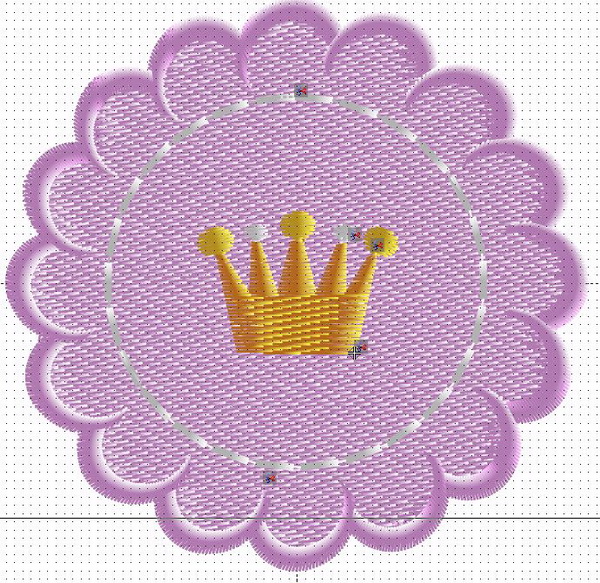
I hooped the film first:
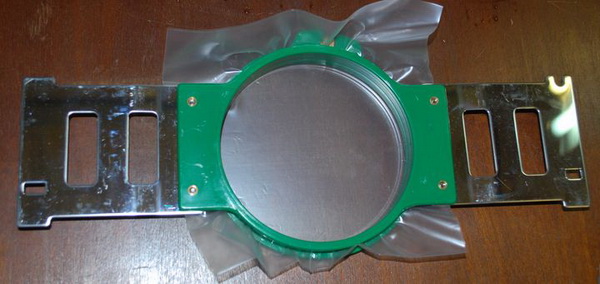
The embroidery went well:
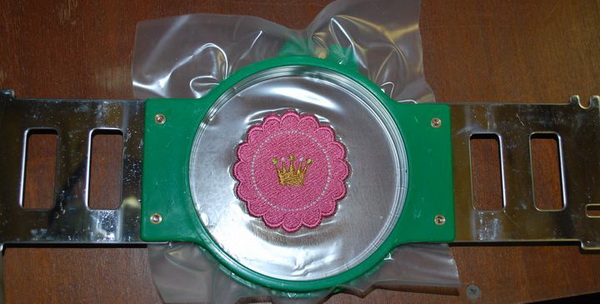
And the unhooping was even better. But after you unhoop the design, it shrinks across the direction of the stitching, which is only natural.
Besides, my design has flaws that need correction — I haven't set the pull compensation right:
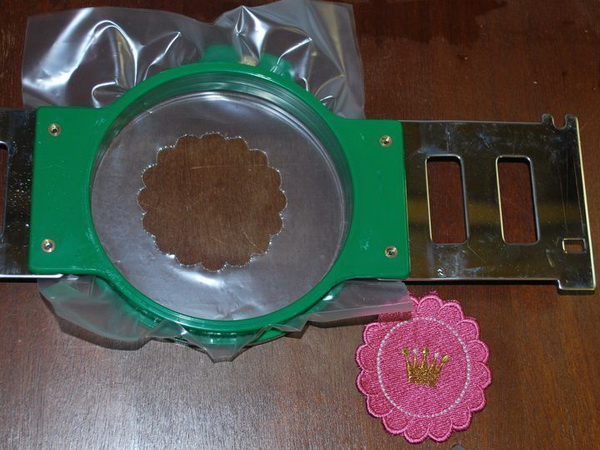
So I made some alterations, taking the distortion into consideration:
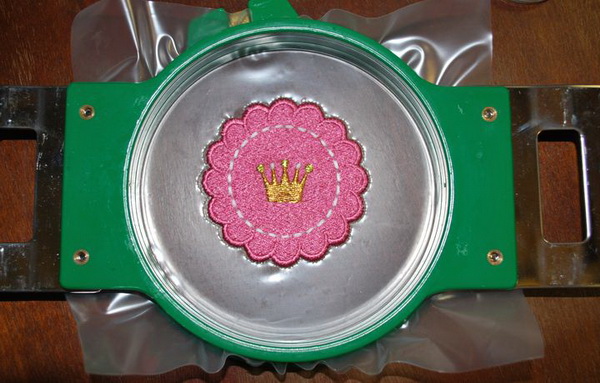
It turned out almost splendid — the result satisfied me, though further corrections could me made still.
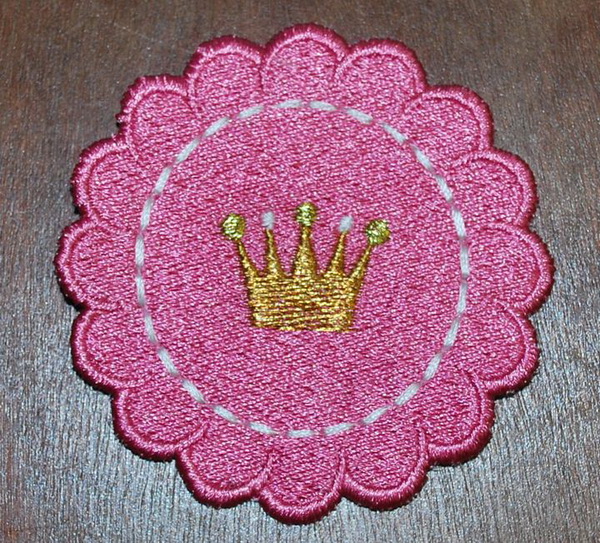
At the second stage I hooped 2 layers of the building spunbond:
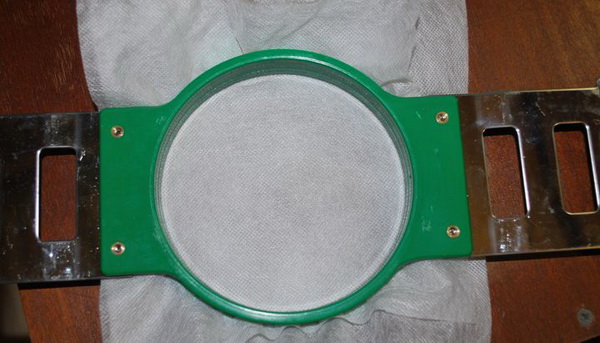
The stitch ran splendidly smooth, even and looked beautiful:

Of course, you cannot remove all of the spunbond — it won't tear away.
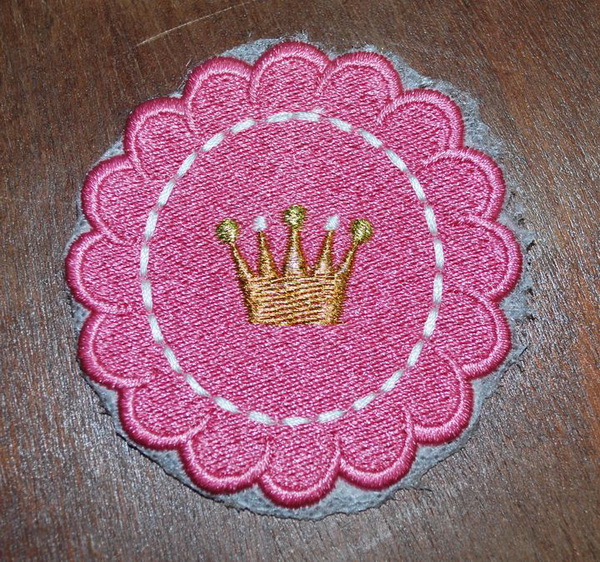
I place the embroidery between the two sheets of paper and iron it at the maximum temperature, hoping that the leftover pieces of non-woven material along the perimeter will be singed. Ironing takes a long time, and I begin to envy the owners of the Heat Press Machines ![]() Spunbond begins to singe, after all, leaving a transparent layer of solid plastic along the perimeter (it will keep the layer from disintegrating):
Spunbond begins to singe, after all, leaving a transparent layer of solid plastic along the perimeter (it will keep the layer from disintegrating):

But the temperature makes the spunbond shrivel, so the chevron shrinks about 3 or 4 mm across the direction of the filling stitches, and assumes an oval shape. And I don't like this at all.
Then I pick up the covering material used in gardening, a spunbond, too, but a thinner one, and hoop two layers of it:
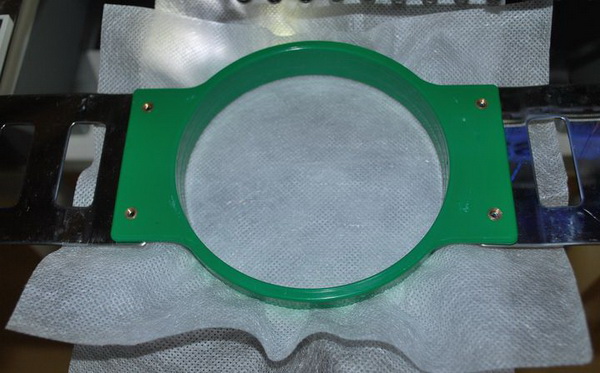
The embroidery goes smoothly:

I trim it along the perimeter:
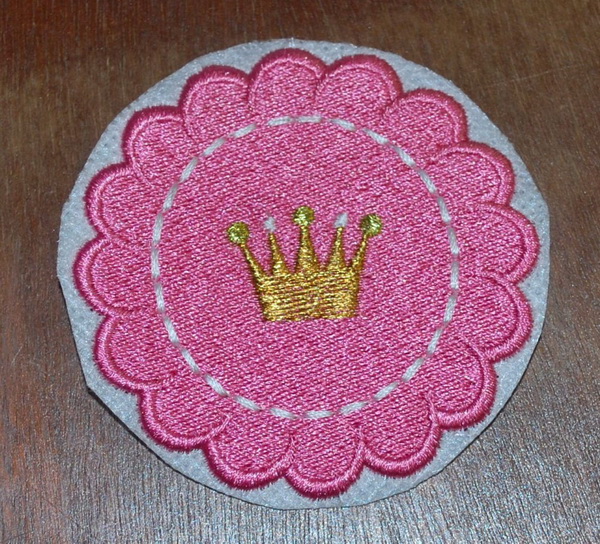
Iron it between the sheets of paper, and get a result similar to the one in the previous case — singed plastic edges along the perimeter and a chevron shaped like an oval:
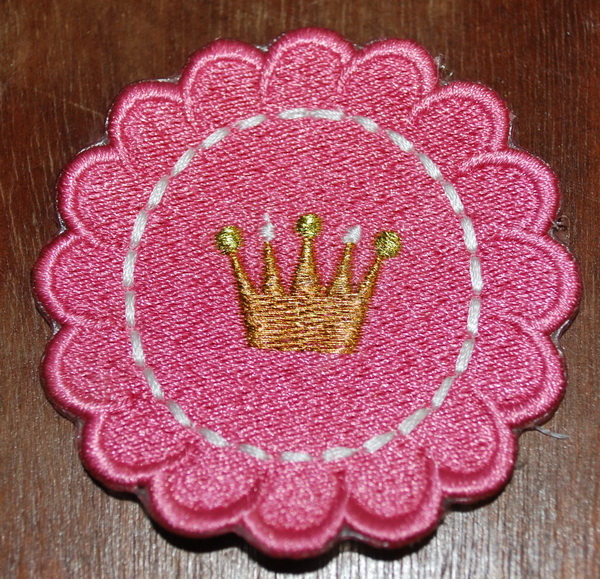
Here are all three chevrons for comparison:
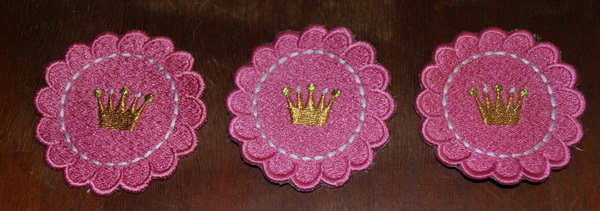
Summary: the filling and the edges of the designs are of a higher quality on spunbond, but the chevrons get distorted, and it instantly catches the eye. Besides, you need to iron them. As for the film, I will keep it in mind, for the sheer simplicity of its use. You can even try to make chevrons with a woven background. But you'll have quite a job creating the design and setting the right parameters.


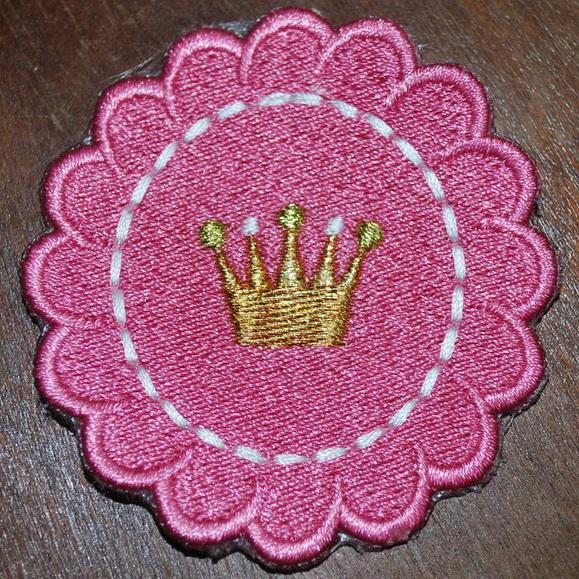

There are no reviews to display.